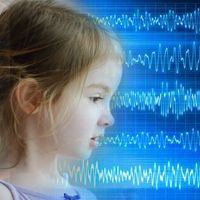Sex Differences in Autism May Inform Diagnosis in Girls
Boys are diagnosed with autism with far more frequency than girls, at a ratio of roughly one to four. Could differences in core symptoms explain some of this variation?

Boys are diagnosed with autism with far more frequency than girls, at a ratio of roughly one to four. Could differences in core symptoms explain some of this variation?
Researchers at Stanford University looked at sex differences in symptoms and brain morphology to see if there is indeed a difference in how autism manifests in boys and girls. Their findings were published online in the September 3 issue of Molecular Autism.
Autism is marked by three core impairments: social impairment, communication difficulties, and repetitive or restricted behaviors. If girls show less impairment or differences in these symptoms, their diagnoses may be delayed or missed entirely.
"The discovery of gender differences in both behavioral and brain measures suggests that clinicians may want to focus diagnosis and treatments for autistic girls differently than boys," said postdoctoral scholar Kaustubh Supekar, PhD, the study's lead author.
The researchers compared the three core impairments in a dataset consisting of 128 girls and 614 boys, ages 7 to 13, matched in age and IQ, from the open access National Database for Autism Research (NDAR). They found no significant differences in social functioning or communication, but did find that girls had significantly less severe repetitive or restrictive behaviors. Repetitive behaviors are actions like hand flapping or spinning. Restrictive behaviors can appear as a preoccupation with a narrow interest or inflexibility over routines. The difference was strong enough that the researchers could predict whether the patient was male or female based on repetitive behavior scores alone with 94 percent accuracy.
The team also compared symptom scores and brain scans of 25 girls and 25 boys with autism from the Autism Brain Imaging Data Exchange (ABIDE), as well as brain images from 19 boys and 19 girls with typical development. They found similar results with the ABIDE dataset and could predict sex based on scores with 89 percent accuracy. They also found significant morphological differences in brain structure organization in all four groups in the regions related to motor skills. The findings link differences in brain structure with differences in repetitive movements.
"Girls and boys with autism differ in their clinical and neurobiological characteristics, and their brains are patterned in ways that contribute differently to behavioral impairments," the study's senior author, Vinod Menon, PhD, professor of psychiatry and behavioral sciences said in a news release. Knowledge of the difference could help clinicians better recognize and treat autism in both sexes, he added. "Understanding this is really quite crucial clinically."